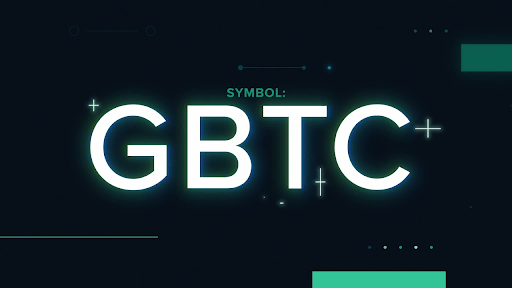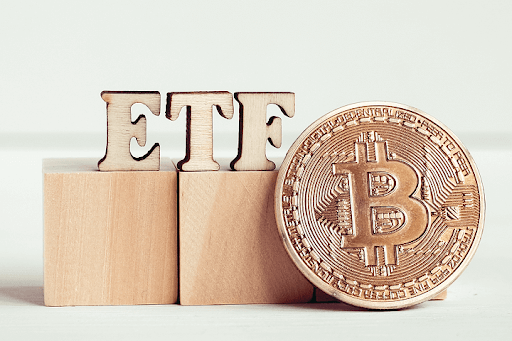The Grayscale Bitcoin Trust is publicly traded and offers Bitcoin exposure to both retail and institutional investors. This became a phenomenal alternative for the crypto space, since an ETF is yet to be approved by the SEC. It functions very similarly to an ETF and is the easiest way to gain exposure to Bitcoin without having to worry about custody. It is not without issues – the product often trades at extreme premiums and discounts to NAV and is structurally flawed. Regardless, it is the best option that investors have in the United States for investing in Bitcoin through legacy systems.
I believe there are a number of hidden risks associated with GBTC if a Bitcoin ETF is approved. There have been many attempts at approval for years now and all have been denied. But the SEC has a new chairman and regulators are beginning to open up to crypto. This leads me to believe that an ETF approval could happen in the near future.
GBTC’s Structure
First, it is important to understand exactly what GBTC is and the two ways it is offered. Originally, GBTC was offered exclusively to accredited investors who were ready to spend a minimum of $50,000. This is still one of the 2 forms today. The product is a grantor trust, meaning Grayscale retains full control of the assets inside. To gain access to this private trust, investors must be willing to lock up their investment for 6 months and pay a 2% management fee. Because of the demand structure, the fund naturally fluctuates above and below its net asset value. This results in a premium or discount at any given time. You can track the GBTC discount or premium to NAV here.
The second way GBTC is offered came after FINRA approved shares to be publicly traded. Everyday investors can find GBTC listed on their exchange or broker alongside any other stock and can buy as little as 1 share. They can sell whenever they please. Trading GBTC this way comes with no lock ups like the private offering.

GBTC’s Added Risks
The first risk associated with GBTC is its potential for added volatility independent of the price of Bitcoin. At first glance, the GBTC chart on a large time frame looks almost identical to Bitcoin’s price history. Due to GBTC trading at a premium or discount and trying to balance the value difference with market swings, it is possible for GBTC to decrease while the price of Bitcoin increases. This is a rare occurrence, but happened back in mid-2017 for two months. Furthermore, on days that Bitcoin is extremely flat and ranges sideways for an extended period, investors moving in and out of the trust can cause extra volatility that Bitcoin holders don’t experience.

The second drawback is that it is expensive. The trust charges a 2% management fee every year to run the fund. Investors don’t directly see the 2% detraction from the investment. It is handled in house and is figured into the premium that investors pay when buying GBTC. The premium ranges based on the value of the share in correlation to how much Bitcoin it represents. At times, the premium has been well over 100%. There is a concept in investing called NAV – Net Asset Value. For GBTC, this is simply the net value of the assets in the trust, i.e. the value of the Bitcoin. The premium is the trading value of anything above NAV (the actual price of Bitcoin) and the discount is anything below NAV.
Hypothetically, if Bitcoin were to remain flat for a year, GBTC would lose 2% of its value in that year for investors rather than remaining pegged to Bitcoin’s price. This 2% fee combined with the premium and increased volatility equates to GBTC lagging behind the recent expansion in Bitcoin. To explain in numbers, GBTC peaked at $29.66 in 2017 but now is priced at $27.35. This is an 8% drop from the 2017 high. Bitcoin peaked at around $19,800 in 2017 and now sits at about $32,850. This equates to roughly a 39% increase from the 2017 high. The point here is that Bitcoin holders have significantly outperformed GBTC holders and will probably continue to do so. As long as the GBTC structure remains (i.e. discounts, extra volatility during swings, and the 2% annual fee), this probably won’t change.
The Impact Of An ETF Approval
Now I want to talk about why a Bitcoin ETF approval could hurt GBTC as a warning for investors currently exposed to GBTC. ETFs are governed under different rules that grantor trusts are not subject to. These laws currently prevent large institutions from investing in GBTC or any trust. An ETF approval would open the doors for a flood of institutional money to gain Bitcoin exposure, because a grantor trust isn’t something they can legally invest in. Further, the ETF would likely be much cheaper than 2%.
This competition could drive investors from GBTC to the ETF. New money entering the ETF and current money leaving GBTC for the ETF would drive the price of Bitcoin up and the price of GBTC price down. This could drive the GBTC price well below NAV. This is speculation but is clearly possible. To make matters worse, this could all happen while the price of Bitcoin increases. On the flip side, if the GBTC trust were to convert into an ETF, it would likely continue to be successful, especially if it is first to be approved.

Aside from the risks involved in GBTC, it is still my number one pick for new investors on the legacy side looking for price exposure, as it can be purchased in an IRA or 401K like any other asset.
That said, I have personally invested in a GBTC competitor called Valkyrie, which is focused on both ETF and trust products. Their trust trades far closer to NAV, eliminating the absurd premiums that are structurally built into GBTC. And knowing that the approval of an ETF would likely end the trusts, they are focused there as well.
The GBTC product is heavily influenced by institutions. If you are curious what their trading strategy is, you might be surprised to read that institutional investors don’t buy the Bitcoin bottom.
